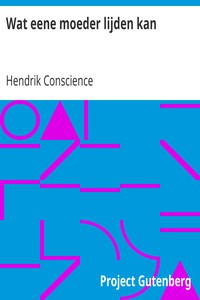| Summary |
"Wat eene moeder lijden kan" by Hendrik Conscience is a poignant novel written during the early to mid-19th century, capturing the struggles of the impoverished underclass in Belgium. The book delves into the hardships endured by a mother and her family, ultimately highlighting themes of maternal sacrifice and the profound effects of poverty. Conscience's vivid descriptions and emotional depth convey the severe realities faced by the working class during this period. The narrative centers around a destitute family living in Antwerp, focusing on the mother, Trees, who is tormented by hunger and the suffering of her children. Amidst the harsh winter, we witness the despair of her ailing child, Mieken, and the hunger pains of her son, Janneken. The father's desperate decision to sell their only means of livelihood—their mosselbak (clam cart)—underscores the family's predicament. However, hope emerges when two charitable women, Annah and Adela, enter their lives, bringing assistance and compassion. Through their acts of kindness, they not only provide physical sustenance but also emotional healing, illustrating the impact of empathy and charity in alleviating human suffering. The book concludes with a sense of renewal and hope, emphasizing the enduring strength of familial love amidst despair. (This is an automatically generated summary.)
|

